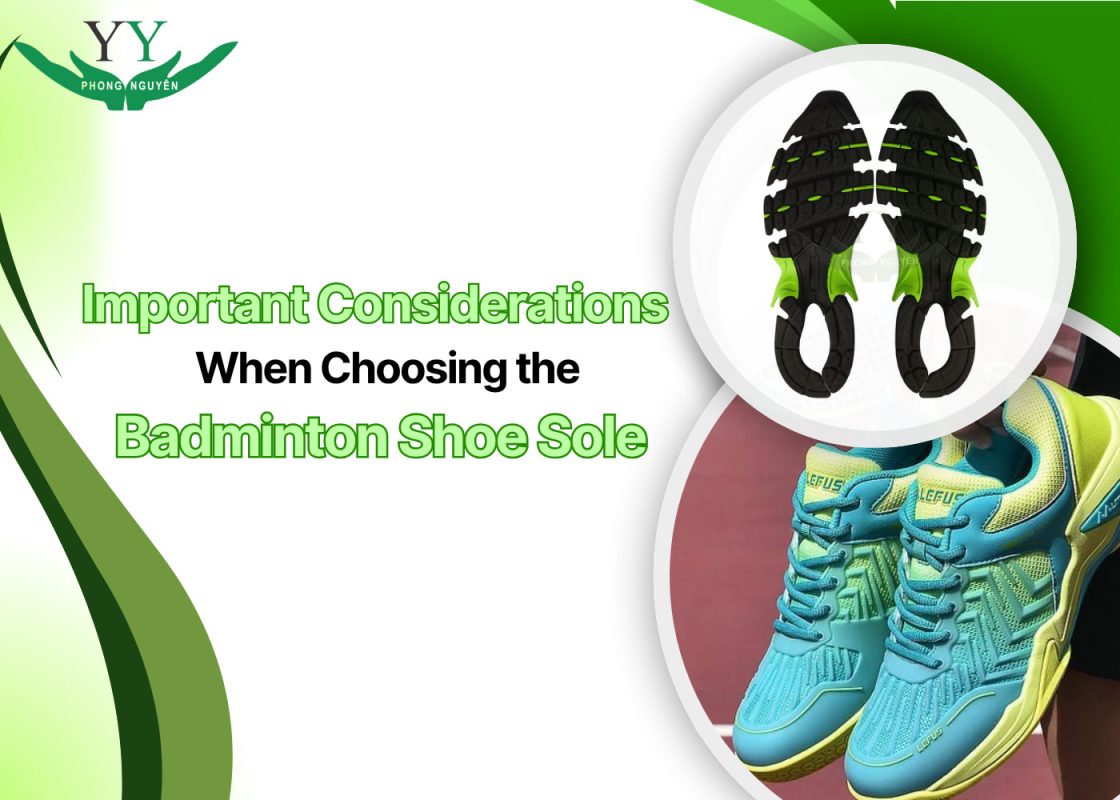Badminton is a sport that requires players to be flexible and quick in their movements. One of the key factors in improving performance and minimizing injuries while playing badminton is choosing the right shoes. Specifically, the badminton shoe sole directly affects comfort and mobility. In this article, let’s join Phong Nguyen to explore important considerations when selecting a badminton shoe sole to ensure you have a good pair that protects your health and enhances your performance.
Choosing the right badminton shoe sole for the court surface
The type of court surface plays an important role in selecting the right badminton shoe sole. In fact, badminton courts are typically divided into two main types: indoor courts and outdoor courts. Each court has its own specific characteristics, so the shoe sole needs to be designed appropriately to ensure performance and safety during movement.
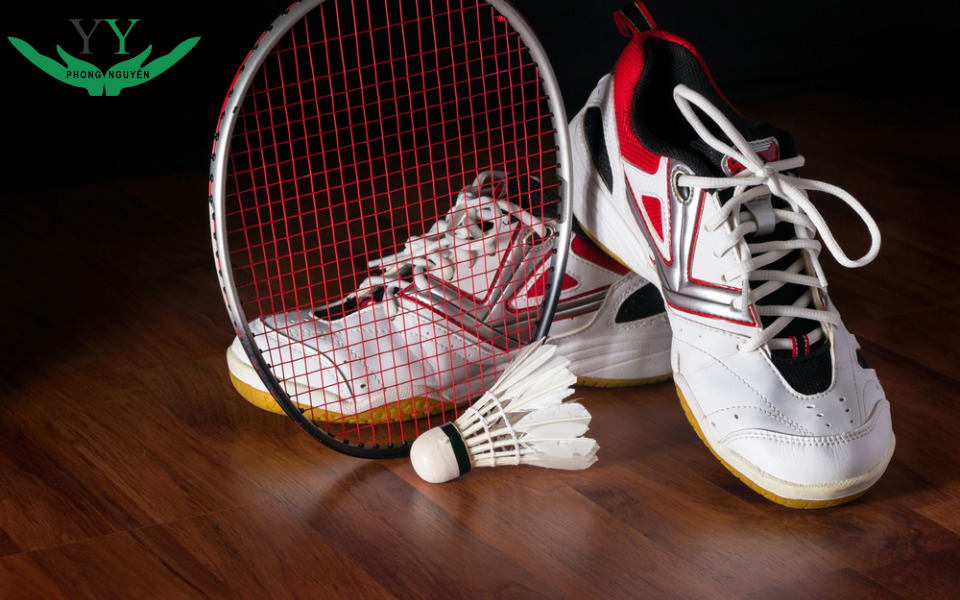
For indoor courts, where the floor is typically made of wood or synthetic materials, choosing shoes with a soft rubber sole is essential. These soles are usually designed with patterns that provide excellent traction, helping to increase grip and reduce the risk of slipping during movement. Additionally, soft soles also provide the necessary flexibility and stability in every stride or jump.
On the other hand, for outdoor courts with surfaces made of concrete or hard synthetic materials, players should opt for shoes with more durable rubber soles. These designs are more capable of withstanding the harsh conditions of the environment and provide greater stability when playing on rough or uneven surfaces.
Read more: Rubber Shoe Soles: Are They Good? Advantages and Classifications
Classification of badminton shoe soles by material
When selecting badminton shoes, the material of the shoe sole plays a crucial role in ensuring grip, comfort, and durability. Different sole materials will directly affect performance and the overall feel during play. Below is a classification of badminton shoe soles by common materials:
Rubber badminton shoe sole
Rubber soles are highly favored in badminton shoes due to their excellent court grip and high durability. With their ability to create good friction, rubber soles allow players to move freely while maintaining safety, minimizing the risk of slipping. In addition, this material is soft and elastic, providing comfort during movement, especially when jumping or changing direction abruptly. Rubber soles are not only durable but also suitable for both indoor and outdoor courts.
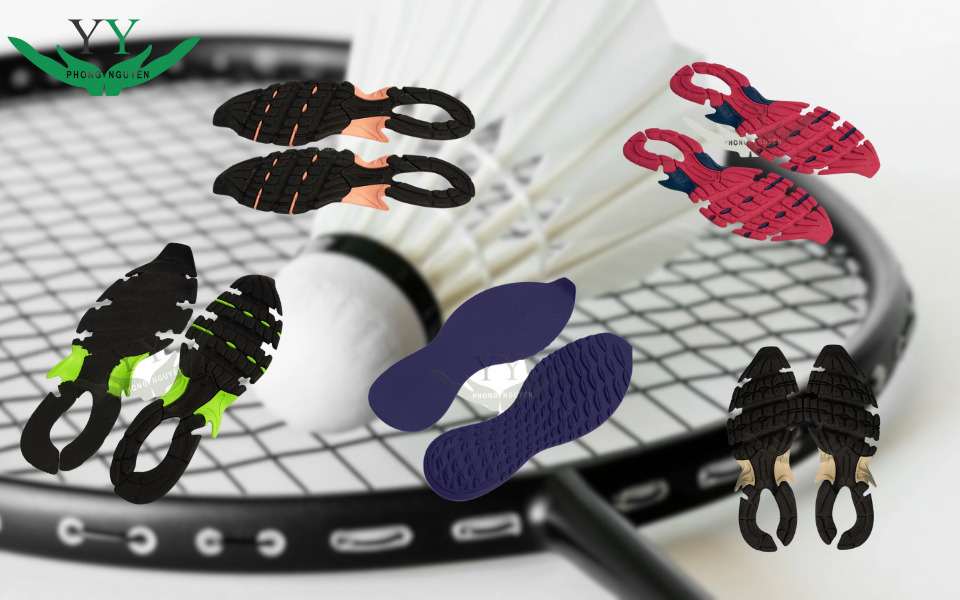
Despite its many advantages, rubber soles do have some limitations. In hot outdoor conditions or on rough surfaces, rubber can wear out quickly, reducing the lifespan of the shoes. Therefore, to ensure long-term use, players should choose shoes that are compatible with the type of court surface and playing environment.
EVA (Ethylene Vinyl Acetate) badminton shoe sole
EVA (ethylene vinyl acetate) badminton shoe soles stand out due to their light weight, excellent elasticity, and shock absorption capabilities. As a result, this material helps protect joints upon landing while also providing comfort during movement. EVA is often used in shoes designed for professional players or those who require high flexibility during play. With their light weight and good durability, EVA soles support quick and agile movements while maintaining stable wear resistance.
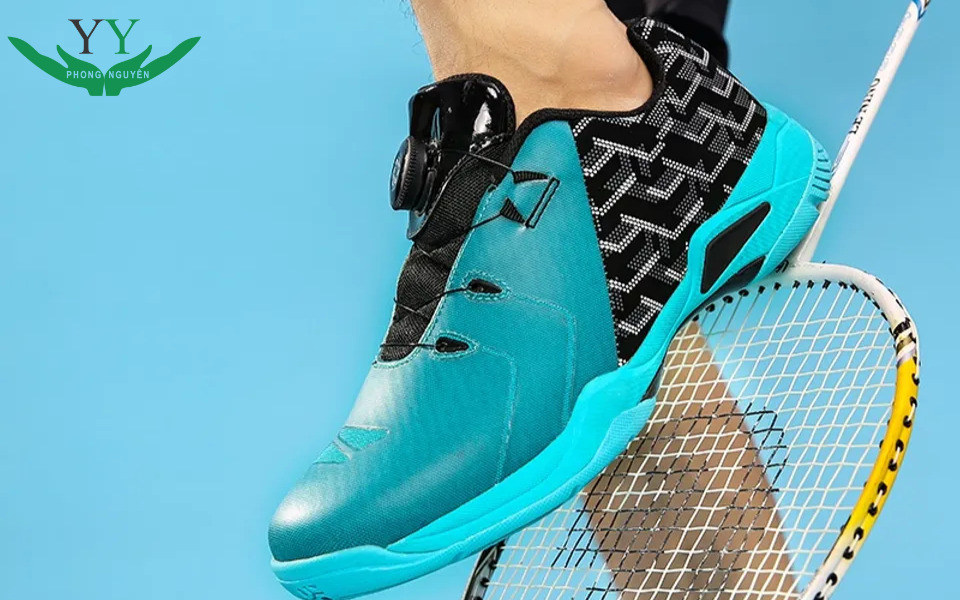
While EVA has many advantages in terms of lightness and shock absorption, it has some limitations in terms of grip. Compared to rubber soles, EVA may not provide as much traction on certain court surfaces, particularly where slipperiness is high.
Phylon badminton shoe sole
Phylon badminton shoe soles are commonly used in many types of sports shoes due to their excellent shock absorption capabilities. With a lightweight structure but still ensuring durability and stability, Phylon helps players feel comfortable during movements. Its superior shock-absorbing properties are particularly beneficial in protecting knee joints, ankles, and other vulnerable parts. Furthermore, Phylon offers good elasticity, enhancing the flexibility of movement on the court.
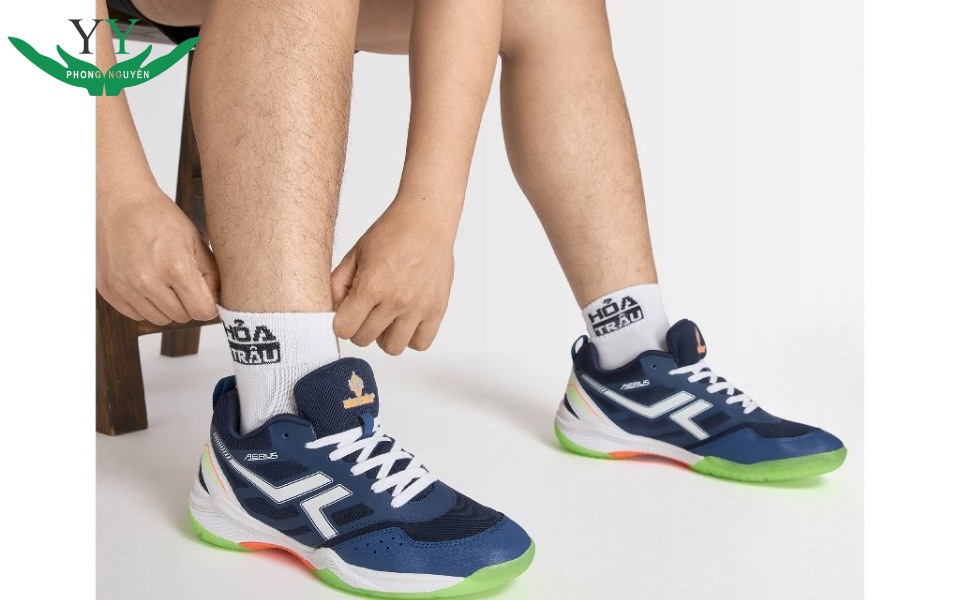
However, the limitation of Phylon soles lies in their grip. Compared to natural rubber, Phylon has lower traction, especially when used on outdoor courts or slippery surfaces.
TPU (Thermoplastic Polyurethane) badminton shoe sole
One of the premium materials used in modern badminton shoes is TPU (thermoplastic polyurethane). This material is known for its high durability, outstanding abrasion resistance, and ability to keep the shoes stable during each movement. Not only does TPU absorb shock well, but it also provides a solid and secure feel for the player. Additionally, with scratch resistance and good adaptability to various weather conditions, TPU is particularly suitable for athletes competing at high intensity.
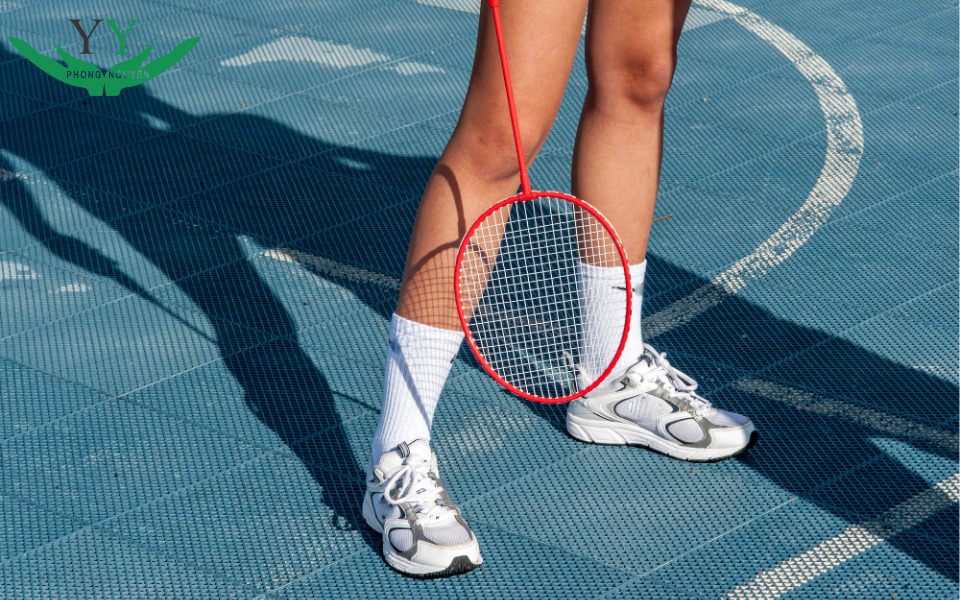
Despite its many advantages, TPU has some limitations. The grip of TPU soles may not be as high as natural rubber, particularly if the design is not optimized. This could affect safety during quick direction changes or when playing on slippery surfaces.
PU (Polyurethane) badminton shoe sole
Among the materials used for badminton shoe soles, polyurethane (PU) is a common choice in high-end products. Thanks to its excellent shock absorption properties, PU soles supports players well when jumping, moving, or changing direction quickly, while also helping protect the joints from injury. This material is also notable for its high durability, good abrasion resistance, and ability to retain its shape over time. Additionally, PU offers a comfortable feel and flexibility, making it ideal for those who prioritize comfort during play.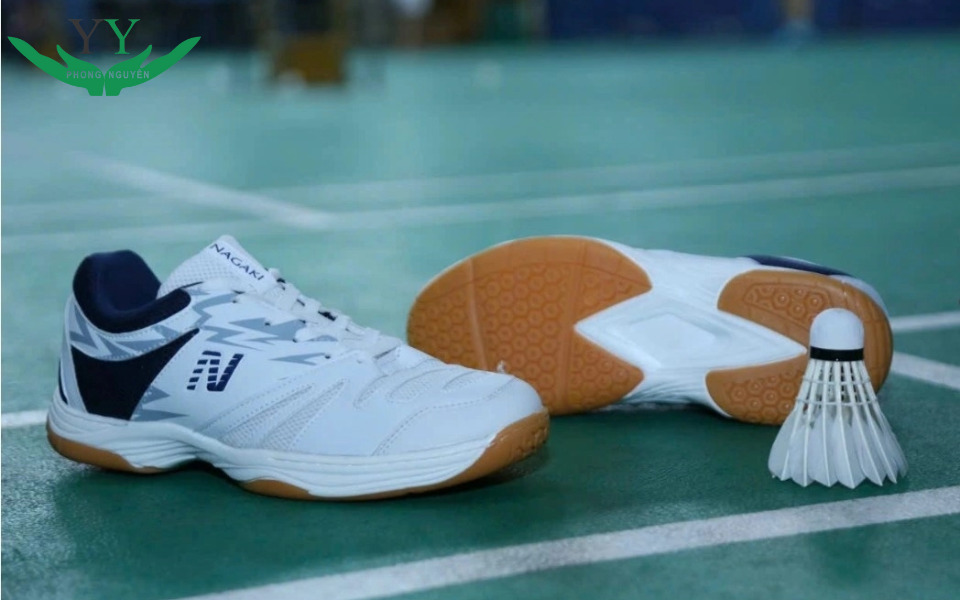
Although PU has many advantages in terms of durability and shock absorption, it does have a limitation in terms of grip. On slippery surfaces, players may experience slight slipping, which could affect stability during movement.
Carbon fiber badminton shoe sole
One of the technological advancements in modern badminton shoe design is the integration of carbon fibers into the shoe sole. This material frequently appears in high-end shoes due to its stiffness, durability, and support for maximum movements, quick direction changes, or high jumps. Additionally, carbon soles are lightweight and offer good shock absorption, helping to reduce pressure on the feet during intense matches. The combination of durability and lightness makes carbon a preferred choice for professional athletes.
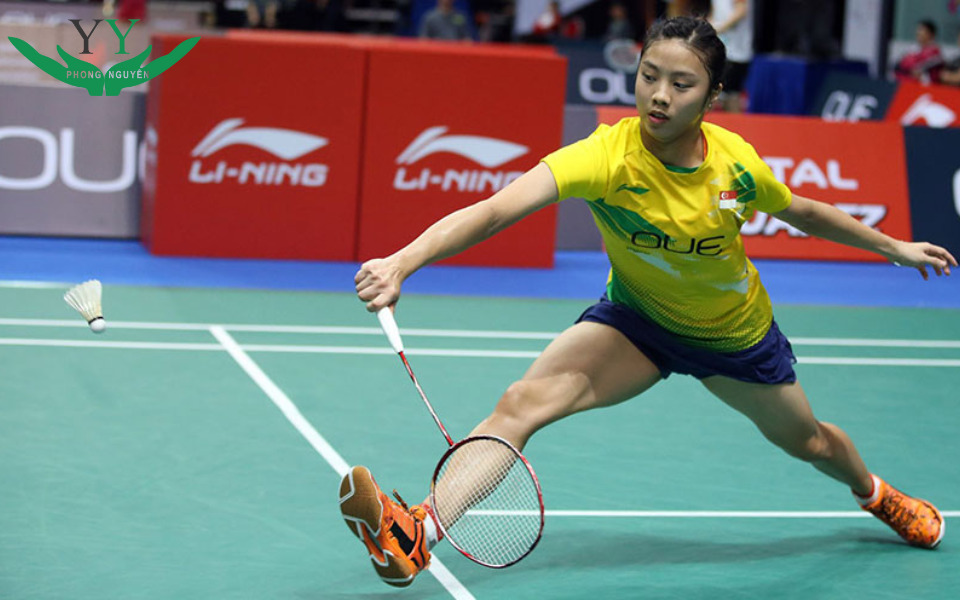
However, using carbon fibers comes with some limitations. Due to its rigid nature and lack of flexibility, a carbon sole may not provide as soft a feel as EVA or PU. Additionally, the high production cost of carbon fibers makes these soles typically only available in expensive shoe lines, making them a suitable option for players with high performance demands and those willing to invest.
Check the size and fit for your foot structure
In addition to the shoe sole, another important factor to consider when choosing badminton shoes is the size and fit of the shoe with your foot structure. The shoe sole must fit the shape of your foot to provide maximum comfort during play.
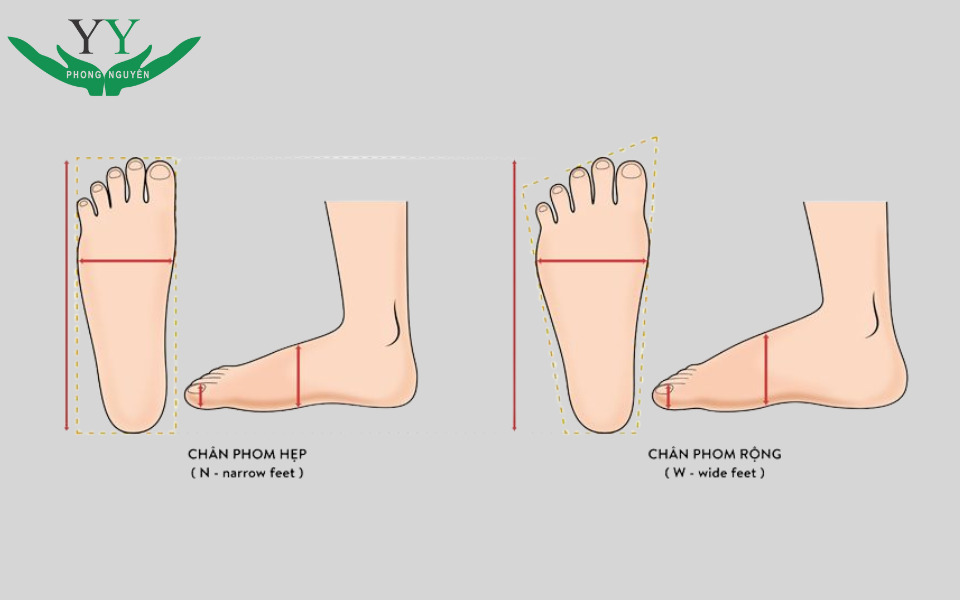
Choose shoes with soles that fit well, not too wide or too tight. An ill-fitting shoe will reduce your ability to move and cause discomfort or foot pain. If possible, you should try the shoes on directly and check for comfort during movement.
Choosing the Right Sole Pattern for Badminton Shoes
The patterns on the soles of badminton shoes are not only aesthetically pleasing but also directly affect grip, mobility, and performance on the court. These patterns are designed to suit different court surfaces and individual playing styles.
Mesh Pattern Sole
The mesh pattern sole, with small interwoven grooves, not only adds aesthetic appeal to the shoe but also optimizes grip on all types of surfaces. This design helps you move flexibly and change direction easily while protecting you from slipping during high-speed play.
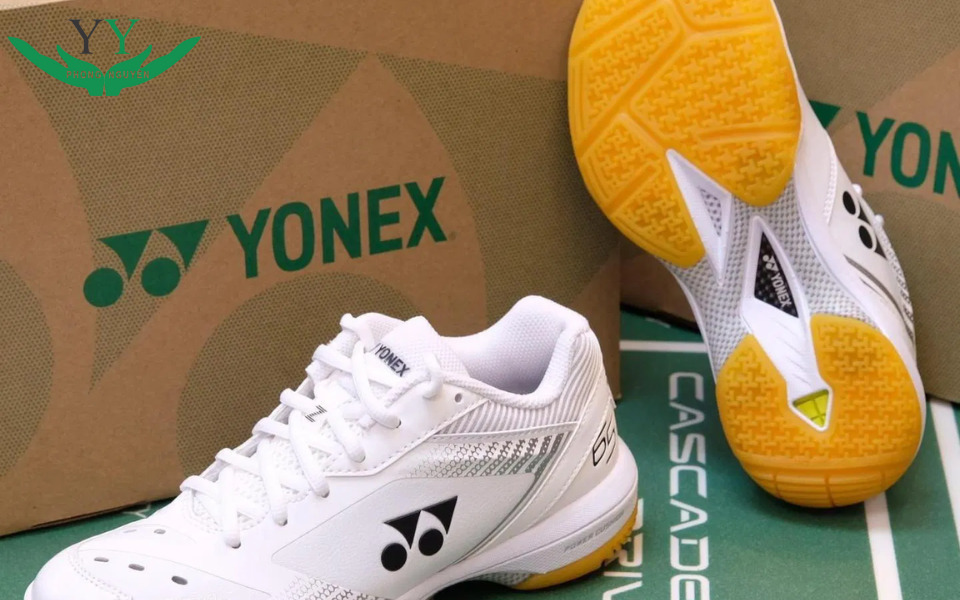
Circular Pattern Sole
With circular patterns concentrated on the toe and heel areas, this design maximizes rotation capabilities and smooth execution of technical moves. Whether you’re performing strong smashes or need to rotate quickly, the circular pattern helps you stay agile and precise in every movement.
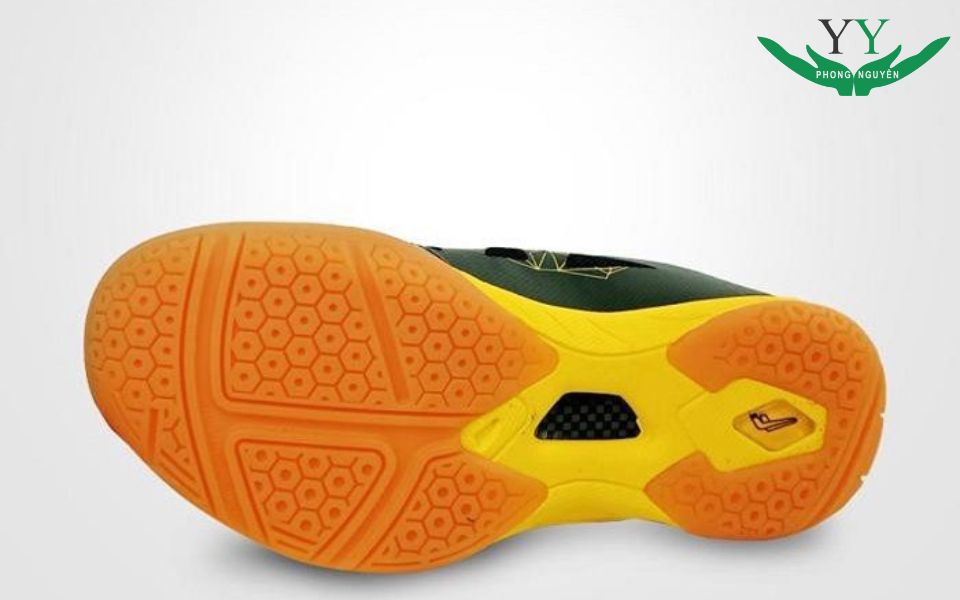
Wave Pattern Sole
Designed with soft, flowing lines, the wave pattern provides smooth and comfortable movement. This is an ideal choice for defensive players, allowing you to move frequently without feeling fatigued. This pattern helps you maintain stability throughout the match.
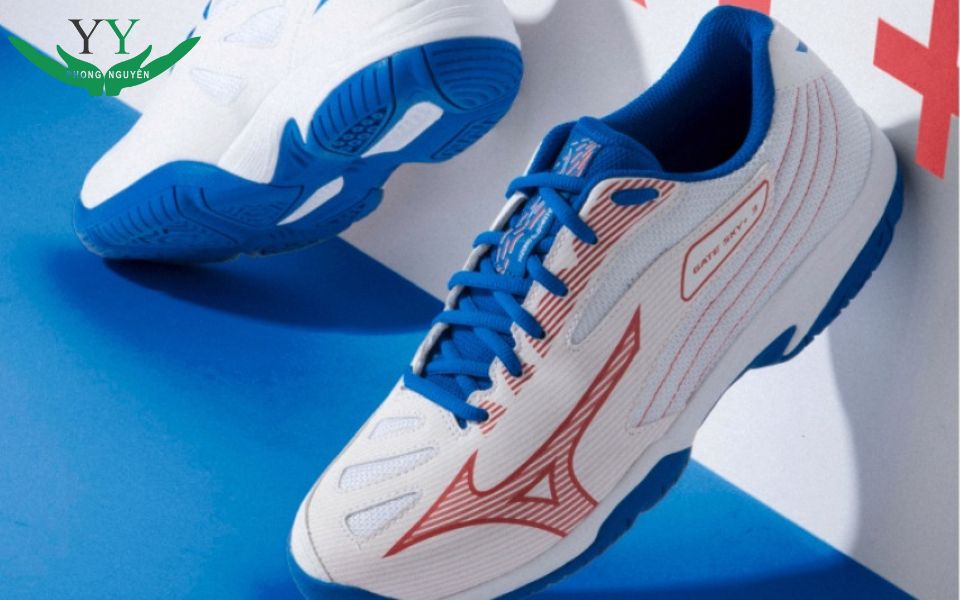
Conclusion
Phong Nguyen hopes that the insights shared above help you better understand the importance of choosing the right badminton shoe sole. A good pair of shoes not only accompanies you on the court but also acts as a strong protector for your feet, helping to minimize injuries and optimize every movement. When your feet are stable, your confidence grows, allowing you to take control of the match and make breakthroughs when it matters to achieve victory.

